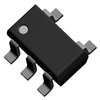参考设计
(25)
Cranking Simulator Reference Design for Automotive Applications
PMP7233: This design is a cranking simulator which generates three different cranking pulses to test automotive systems up to 50W. A microcontroller sets the output voltage of a synchronous buck in the range of 2-15V accordingly to the programmed curves. Output current is in the range of 3.3-25A. It is a complete system and all the information necessary to build the device is available.
TIDA-00609 Self-Booting Audio System | TI.com
TIDA-00609: The purpose of this TI Design is to provide the designer hardware and software tools that can be used as reference for audio systems. The new revision of the PurePath™ Console Motherboard (RevF) adds stand-alone, self-booting capabilities to allow making compelling demos with any EVM that is compatible with this platform.
Contactless Charger 30mA Single Li-Ion
PMP4651: Complete wireless charger set for small Li-Ion battery charging system. The nominal output curent is 30mA on a single cell battery, while the intput comes from an USB source.
PMP7233 Cranking Simulator Reference Design for Automotive Applications | TI.com
PMP7233: This design is a cranking simulator which generates three different cranking pulses to test automotive systems up to 50W. A microcontroller sets the output voltage of a synchronous buck in the range of 2-15V accordingly to the programmed curves. Output current is in the range of 3.3-25A. It is a complete system and all the information necessary to build the device is available.
Electric Toothbrush Controller Reference Design
TIDA-00602: This TI Design uses Texas Instruments’ low-voltage H-Bridge motor driver with an integrated LDO voltage regulator and an ultra-low-power microcontroller (MCU) to demonstrate a full implementation of a battery powered electric toothbrush.
PMP9353 Altera Cyclone V SoC Power Supply Reference Design | TI.com
PMP9353: The PMP9353 reference design is a complete power solution for Altera Cyclone V SoC devices. This design uses several LMZ3 series modules , two LDOs, and a DDR termination regulator to provide all the necessary rails to power the SoC chip. This design also shows correct power-up sequencing.
16-Bit, 1MSPS Multiplexed Data Acquisition Reference Design
TIPD169: This design is for a 16-bit 1MSPS single-ended, multiplexed data acquisition system (DAQ) for dc inputs. The system is composed of a 16-bit successive-approximation-register (SAR) analog-to-digital converter (ADC), SAR ADC driver, reference driver, and multiplexer. The design shows the process to optimize a single-ended DAQ to achieve fast settling at a sampling rate of 1MSPS.
Self-Booting Audio System
TIDA-00609: The purpose of this TI Design is to provide the designer hardware and software tools that can be used as reference for audio systems. The new revision of the PurePath™ Console Motherboard (RevF) adds stand-alone, self-booting capabilities to allow making compelling demos with any EVM that is compatible with this platform.
Altera Cyclone V SoC FPGA Power Reference Design
PMP9353: The PMP9353 reference design is a complete power solution for Altera Cyclone V SoC devices. This design uses several LMZ3 series modules , two LDOs, and a DDR termination regulator to provide all the necessary rails to power the SoC chip. This design also shows correct power-up sequencing.
TIPD169 16-Bit, 1MSPS Multiplexed Data Acquisition Reference Design | TI.com
TIPD169: This design is for a 16-bit 1MSPS single-ended, multiplexed data acquisition system (DAQ) for dc inputs. The system is composed of a 16-bit successive-approximation-register (SAR) analog-to-digital converter (ADC), SAR ADC driver, reference driver, and multiplexer. The design shows the process to optimize a single-ended DAQ to achieve fast settling at a sampling rate of 1MSPS.
PMP9353 Altera Cyclone V SoC Power Supply Reference Design | TI.com
PMP9353: The PMP9353 reference design is a complete power solution for Altera Cyclone V SoC devices. This design uses several LMZ3 series modules , two LDOs, and a DDR termination regulator to provide all the necessary rails to power the SoC chip. This design also shows correct power-up sequencing.
